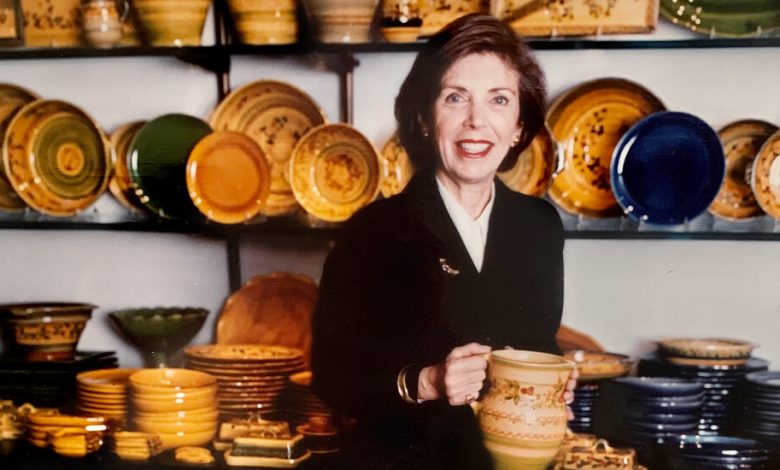Phyllis Pressman, Luxury Superstore Matriarch, Is Dead at 95

Phyllis Pressman, the matriarch of the family that founded Barneys New York, the discount men’s wear store turned luxury emporium — and the creator of Chelsea Passage, the store’s home goods bazaar, a pivot point in its evolution from a suit merchant to an elite lifestyle behemoth — died on Tuesday in Palm Beach, Fla. She was 95.
Her death, in a hospice facility, was announced by her son Gene Pressman.
Barneys was always a family affair. It was named for Barney Pressman, who in 1923 pawned his wife’s ring, at her encouragement, for $500 to buy the lease of a small store on Seventh Avenue and 17th Street in Manhattan. There, he built an empire selling brand-name suits at cut-rate prices. His son, Fred, who took over in the 1950s, transformed the place into an haute men’s retailer that included European designers.
Phyllis Pressman, who was married to Fred, began working in the store so she could spend more time with him. Her first intervention was to style the windows, which she thought were boring, adding mannequins and whimsical objects like papier-mâché dogs. Then she began gussying up the interior of the store with antiques, jewelry and housewares, as well as the objects and textiles she found on her travels to the Marché aux Puces in Paris and Portobello Road in London.
In the late 1970s, Fred Pressman covered an alley abutting their property on the 17th Street side with a skylight and turned it over to his wife to fill with home goods. They named it the Chelsea Passage.
Ms. Pressman’s eye was impeccable, and her tastes were catholic. She carried the surrealist decorative objects of the Italian designer Piero Fornasetti and pieces by the English Art Deco ceramist Clarice Cliff. There were teapots sprouting roses by Mary Rose Young, as well as hand-painted throw pillows, twig place mats and antique jewelry. She sold flatware, stemware and linens, setting the pieces out on antique furniture — marble topped butcher tables, rattan settees, Art Deco bars — which, because customers asked, she began to sell too. She sold Li-Lac chocolates in display cases designed by a young Peter Marino.



